Leonard Brillson
Editor, INTERSECTIONS
Member, Government Affairs Committee
Welcome to our INTERSECTIONS Newsletter!
Since our last newsletter, major budgetary events on Capitol Hill have occurred that directly affect Federal support for our science and technology community. The MRS Government Affairs Committee (GAC) aims to understand the dynamically changing legislative policy environment and its impact on materials research.
Our new GAC Chair, David Norton, provides important perspectives on the recent Congressional appropriations and opportunities for 2018 that reflect positive support for materials science.
Our MRS Washington consultant, Damon Dozier, describes in detail the Congressional Appropriations Committees’ planning for 2019 and new opportunities in multiple areas including quantum science.
Brent Carey, our Outgoing Grassroots Subcommittee Chair, looks back at the outstanding outreach support that MRS Members have provided over his tenure and hands the reins over to incoming Chair, Boris Dyatkin. In turn, Boris highlights the messages that you, our members, have sent to Congress this year and the importance of sharing your stories that reflect the importance of materials science.
In the Fellowship Corner, Ashley White describes this year’s Fellowship Selection process and introduces our new Congressional Fellows.
Bill Hammetter, our Congressional Visits Day Chair, recounts how MRS Members spoke directly to Congressman/women and their staffs about the importance of support for science and how you can participate.
Government Agencies Subcommittee Chair, Diogenes (Dio) Placencia, describes his latest initiatives to increase the value of government agency program managers participating in our national meetings and our outreach to Mexican MRS Members.
Finally, Sang-il Park’s INTERSECTIONS article on value-added materials science in this issue features yet another success story, highlighting how investments in materials science pay off in ways that the public and especially our elected officials can relate to.
MRS is working hard to make sure that the materials research community is being heard and that it has input in developing effective government policy for support of materials science. Here is the latest news.
Government Affairs Committee Chair News—The Importance of Science Advocacy
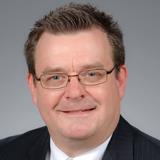 David Norton
David Norton
Chair, Government Affairs Committee
For the past six months, I have enjoyed the privilege of serving as Chair of the MRS Government Affairs Committee (GAC), building upon the outstanding work of my predecessor, Dr. Kevin Whittlesey. The GAC plays an important role in MRS, promoting the mission and interests of materials research to government stakeholders. Since January, efforts within Washington, DC pertaining to research support have been active. With half of the 2018 calendar year in the books, there have been tangible developments, particularly from Congress, that was quite positive for materials research efforts within the U.S. After some handwringing over early, less than favorable budget proposals, the 2018 Congress came through with some of the largest year-to-year increases seen in recent years in funding for research agencies that directly or indirectly support materials research in the US. In particular, appropriations for FY 2018 that were passed in the spring provide additional resources for materials research activities at national laboratories and universities. Appreciation for this strong support for materials research was expressed to members of the US House and Senate during GAC congressional visits this past spring.
The GAC is currently tracking appropriations discussion for FY 2019, as well as additional developments that should prove beneficial to the materials research community, among which is an effort focused on quantum science. The White House Office of Science and Technology Policy and the National Institute of Standards and Technology are currently examining federal priorities in quantum science. The House Science Committee is poised to introduce legislation that would launch a National Quantum Initiative. We will continue to follow these efforts, providing materials-relevant input as opportunities are presented.
The major focus of the GAC is on positive engagement with the federal agencies and Congress, supporting the materials research agenda. We are intent on directly connecting the materials research community and interests to funding agencies and other federally supported research activities. While most of our efforts center around the US agencies, outreach to government-supported research activities outside of the US is also part of GAC interests. I look forward to serving the materials community as we move towards an outstanding 2018 MRS Fall Meeting in Boston.
What's Happening in Washington
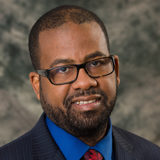 Damon Dozier
Damon Dozier
MRS Director of Government Affairs
At the beginning of the spring season, Congress has begun work on appropriations legislation – An effort to avoid the scenario that has taken place over the past several years that has seen the body forced to agree in continue resolution (CR) packages to ensure that the government remains funded and avoid costly shutdowns. Thanks to the budget agreement that was passed earlier this year, lawmakers have an additional $300 billion over the next two years to spend more than current law allows.
On the House side, the Commerce, Justice and Science Appropriations Subcommittee has approved a bill that would include $21.5 billion for NASA, an increase of over $800 million over the previous year’s funding level, and also recommended a funding level of $8.1billion for the National Science Foundation – a number consistent with the level MRS has requested for the 2019 fiscal year. The House Energy and Water Appropriations subcommittee approved the FY 2019 Energy and Water bill, and under the legislation, the Department of Energy would receive $13.4 billion, an increase of over $500 million over FY 2018 and almost $5 billion over the President’s budget request.
On the Senate side, the Senate Energy and Water Appropriations subcommittee just approved the FY 2019 Energy and Water bill, and it will now head to full Committee on Thursday. Under the bill, the Office of Science would receive $6.65 billion, $390 million above the FY2018 enacted level and $1.26 billion above the budget request and ARPA-E would receive $375 million—both new historic highs. The bill would provide $677 million for the joint Office of Science-NNSA exascale computing initiative. Unfortunately, in both the case of the DOE Office of Science and the Applied Energy programs, the recently released Statement of Administration Policy (SAP) from the White House recommends lower funding levels and requests that ARPA-E is eliminated altogether.
Congressional staff reported to MRS volunteers during the most recent Congressional Visits/Agency Visits Day (CVD/AVD) activities (see related story this issue), that their goal is to complete all appropriations bills in “regular order” (e.g., on time), despite it being an election year and with limited legislative days left on the Congressional calendar.
Avid readers of INTERSECTIONS will recall that the House Science Committee recently held two hearings on the topic of quantum technology and quantum information sciences. Because of those efforts, the Committee plans to introduce a bill in the coming weeks that would, according to the Committee, “create a 10-year National Quantum Initiative aimed at increasing America’s strategic focus on quantum information science and technology development.” The bill, specifically, would:
- Set up a National Quantum Coordination Office established by sec. 102(a) of the draft bill is charged with providing outreach and technical information exchange to a wide array of audiences and stakeholders;
- Establish a working group that would include representatives from DOE, DOD, NIST, NSF, OSTP, and others are to investigate opportunities for international collaboration on quantum research, information, science, and technology;
- Create an Advisory Committee consistingof members from a number of communities, including the academic and industry sectors to examine issues around quantum technology;
- Establishes up to five DOE Quantum Information Science Research Centers to conduct research, development, and testing to accelerate scientific breakthroughs in quantum information science and technology and allows DOE to consider applications on a competitive basis for Centers at National Laboratories, multi-institutional collaborations, and private-sector entities;
- Authorizes no less than 2 NSF National Quantum Research and Education Centers to be awarded on a competitive basis to academic or non-profit research institutions to conduct basic research, andsupport undergraduate and graduate curriculum and workforce development; and
- Directs NIST to convene a workshop of stakeholders to discuss "future measurement, standards, cybersecurity, and other needs for supporting the development of a robust QIS and technology industry in the United States."
Overall, it looks like it will be a busy summer on Capitol Hill. If you have any comments on this article or would like to learn how to become more involved in the government affairs activities of MRS, please send an email to [email protected].
Outgoing Grassroots Subcommittee Chair News—
Thanks for Your MRS Grassroots Advocacy, Brent Carey, Outgoing Chair, Grassroots Subcommittee
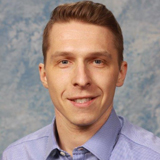 Brent Carey
Brent Carey
Chair, Grassroots Subcommittee
In my last opportunity to write as the Chair of the Grassroots Subcommittee, I would like to thank all of you for your advocacy over the years. It’s been my pleasure to lead our subcommittee – but the true impact comes from you! Over the past three years, MRS Members have sent over 12,000 letters to Congress as well as the Obama and Trump administrations on matters that are of critical importance to materials research. We helped relax the restrictions to conference travel for government employees, nudged the American Innovation and Competitiveness Act across the finish line, and supported the single largest boost to federal R&D budgets in the past several decades. This isn’t a comprehensive list of our advocacy impact, and we certainly cannot claim these victories as our own, but these efforts – your letters – moved the needle.
Boris Dyatkin has taken over as the Chair of the Grassroots Subcommittee, and I’m confident that the group is in very capable hands. He has been a member of our subcommittee for five years and has personally drafted many of our recent letters. He’s a passionate S&T policy wonk and is well positioned to carry our charge forward. I’ll certainly look forward to sending my letters in 2018 and beyond!
Incoming Grassroots Subcommittee Chair News
 Boris Dyatkin
Boris Dyatkin
New Chair, Grassroots Subcommittee
The strength of the Materials Research Society lies in its roots – with over 14,000 members who comprise its body. We are scientists and engineers; students and professors; laboratory technicians and entrepreneurs; writers and educators. And all of us – who consider materials research to be our calling – have much at stake during each policy turn that changes course on program priorities, funding levels, and government agency organization. These decisions start (and stop) numerous materials discovery stories. In the coming years, we will call on you to tell us these stories, and we want to make sure that the decision-makers around the country hear them as well. Your first-hand experiences with specific programs and funding initiatives that successfully solved technology challenges inspired future scientists, and paved the way for commercially viable, job-producing businesses present the greatest asset for lawmakers in their efforts to develop pragmatic science policy. Our message will resonate stronger with every story that we can share. Our success lies with you – the MRS Member. We will be counting on you to recount your experiences and priorities in our efforts to deliver a 14,000-Member strong message to our elected officials. We will be asking you to share your stories in the near future, and we are counting on your help!
Our advocacy strength and the passion of our members were most recently on display at the 2018 MRS Spring Meeting in Phoenix, Arizona. The Materials Voice Campaign called upon you to contact elected officials about key materials science policy issues, and we sent 850 letters. We brought three issues to the attention of the President, our Senators, and our Representatives. We highlighted the significance of key applied breakthrough research programs, such as the Advanced Research Programs Agency-Energy (ARPA-E) and the NIST Manufacturing Extension Partnership (MEP). These initiatives, which are hotly debated in Congress, accelerate high-tech commercial development and accompanying growth of high-paying jobs that will remain in the United States. Furthermore, our advocacy letters underscored the dangers and inherent inefficiencies of a vacant Office of Science and Technology Policy (OSTP). This office helps mold the government’s broad science initiatives and directly influences the priorities of the agencies that carry out and fund our research. It deserves a full cadre of well-qualified staff, and your letters properly reverberated that message.
The final letter introduced the National Quantum Initiative to our policymakers. Its intentions and structure parallel those of the successful National Nanotechnology Initiative, and its projected benefits will empower essential discoveries and computing capabilities. Our timing perfectly coincided with the legislative calendar. Shortly after our Materials Voice campaign, the U.S. House Science Committee began work to introduce a bill that, if enacted, will enable this very initiative. Our letters were at the forefront of the legislators’ minds during the markup of this bill, and our advocacy letters were an integral element of empowering this important initiative.
Our advocacy efforts continue unabated. Right now, the U.S. Congress is debating bills that will authorize key materials science programs and set the funding levels for specific agencies and initiatives for the 2019 Fiscal Year. Time and time again, your letters have rescued essential programs, jumpstarted important initiatives, and properly oriented agency priorities. This time around, your advocacy efforts will be as important as ever. Our strength lies in our experience, our numbers, and our passion for our work, and we will continue to succeed.
MRS Congressional Science & Engineering Fellowship Corner
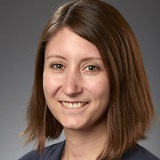 Ashley White
Ashley White
Chair, Congressional Fellow Subcommittee
The Congressional Fellowship selection committee completed its selection process for the 2018–2019 MRS Congressional Science and Engineering Fellows earlier this spring, and I’m pleased to introduce our two incoming fellows.
Dylan Rittman will serve as the 2018–2019 MRS/OSA fellow. He will graduate with his PhD in Geological Sciences from Stanford University this summer, where he is studying the behavior of nuclear materials in extreme conditions. His research focused on investigating the process of ionizing radiation damage over the femtosecond-to-nanosecond timescales on which it occurs. He has also worked on nuclear waste policy through his participation in the Reset of U.S. Nuclear Waste Management Strategy and Policy series, hosted at the Center for International Security and Cooperation. His policy interests include domestic energy and international non-proliferation.
Michele Bustamante will serve as the 2018–2019 MRS/TMS fellow. She is currently completing a postdoctoral research appointment at Massachusetts Institute of Technology’s Materials Systems Lab, where she specializes in the techno-economic assessment of materials, products, processes, and systems and has spent the last two years applying those skills to various industries, from energy to mining to shipbuilding. Michele earned her PhD in 2016 from the Golisano Institute for Sustainability at RIT, where her dissertation work focused on assessing scarcity and criticality of minor metals used in solar and other clean energy devices. Her policy interests span energy and environment, natural resources, food security, education, and equality.
Dylan and Michele will begin their fellowships this September, starting with our traditional welcome breakfast with former MRS Congressional Fellows and a few members of GAC. After that, they will join a host of science and technology policy fellows sponsored by other professional societies for a two-week orientation provided by the American Association for the Advancement of Science, after which they will undergo a placement process that will determine the personal office or committee they will join for their fellowship year.
The GAC also sponsored a Congressional Fellowship information session at the 2018 MRS Spring Meeting in Phoenix, which was led by 2013–2014 MRS/OSA Fellow Sydney Kaufman. These sessions, which MRS has held at both the Fall and Spring MRS Meetings for several years, provide an overview of the fellowship program to potential applicants and serve as a forum for questions and answers. Many fellowship applicants cite these info sessions as their introduction to the program. Please direct any potential applicants, at all career stages, to these information sessions or to the MRS Fellowship web page.
Our current 2017–2018 MRS Congressional Fellows, Sarah Vorpahl (MRS/OSA) and Scott Litzelman (MRS/TMS), are entering the final quarter of their fellowship year, working in the offices of Senator Bernie Sanders (I-VT) and Senator Ron Wyden (D-OR), respectively. Stay tuned for an update as they finish their fellowships and continue their careers.
Spring Congressional Visits Day—Science Does Not Speak for Itself—Part II
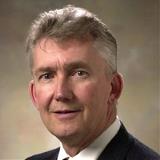 William Hammetter
William Hammetter
Chair, Congressional Visits Day Subcommittee
On May 8, 20 MRS Members came to Washington, DC to “speak for science” with their respective Senators and Congressional Representatives. Breaking into six teams of 3 – 4 members each, our group met with 46 legislators in the House and Senate, discussed the importance of continued, consistent federal support for fundamental research funding, delivered a packet of information to support our requests, and, most importantly, told personal stories of how federally supported research has made an impact in the state or district of the legislator. Our “targets” were those legislators that were members of the House or Senate budget or appropriations committees. Unfortunately, our end-of-day debrief, at which time we discuss the feedback from the visits, was interrupted by a hotel fire alarm that emptied the entire hotel into the street. After a long wait, with lots of firefighter activity (but no fire), we decided to forgo the on-site debrief and depend on team reports that could be sent to the entire visit team for comment and review. In general, we heard that federal funding for fundamental research is not a partisan issue, rather a question of what to support, at what level, and how to allocate the resources with respect to other needs. Our message seemed to be well received in each of the offices we visited, and many pictures were taken with Senators and Representatives. Once again, we were encouraged to continue these visits to keep federal funding for fundamental research “in front” of important legislators.
We realize that we cannot bring more MRS Members to Washington, DC to participate in the actual visits on “the hill,” but we also realize that if we, as a technical Society, want to amplify our voice when “speaking for science,” we need greater member involvement. How can YOU participate? There are several ways to become a part of our voice for science. First, participate in the MRS Materials Voice effort, both at our technical meeting and during the intervening months. Template-letters to your specific legislators on topics important to the Materials community are on the MRS website. You can “customize” these letters or send them as-is with just a few keystrokes. Second, check out the Policy Issues on the MRS website. Let us know your position on the policies important to you. We need this information to better represent the Materials community. Next, sign up for Issue Alerts, to learn of matters important to the materials community and recommendations of how to respond. For educators, do our best to educate the next generation of materials researchers, do high-quality research that has an impact for the good of our nation, and apply the results of materials research to innovations that benefit humanity. Last, but certainly not least, please get involved. Learn what the issues are, formulate an opinion, and let someone know that opinion. The Government Affairs Committee of MRS can help prepare “Letters to the Editor” for publication in your local press. Our Society also has a “Grassroots Subcommittee” that can help with networking on many geographic levels. Whatever you choose to do, please consider getting involved in speaking for the importance of federal funding for fundamental research.
Thanks to those participating in this Congressional Visit Day, and special thanks to Donna Gillespie, MRS Government Affairs Coordinator, and Damon Dozier, MRS Director of Government Affairs, for logistics, excellent training and preparation, preparation of background materials, scheduling, and travel. Without that support, we would have simply been carrying sandwich boards on street corners. I leave you with a few photos from the 2018 CVD meetings.
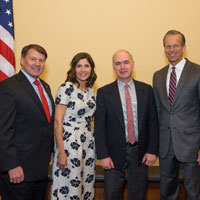
Pictured here are, from left to right: South Dakota Senator Mike Rounds, Congresswoman Kristi Noem, Steve Smith, and Senator John Thune.
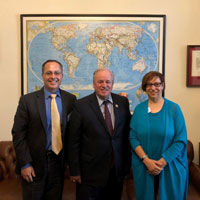
Pictured here are, from left to right: Todd Osman, Pennsylvania Congressman Mike Doyle, and Judy Meiksin
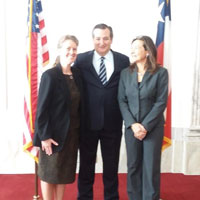
Pictured here, from left to right, are: Linda Olafson, Texas Senator Ted Cruz, and Naomi Halas
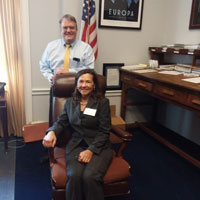
Pictured here are Texas Congressman Ted Culberson and Naomi Halas. Naomi is sitting in the chair used by Former President Lyndon Johnson in the Oval Office of the White House. A great fit!
2018 MRS Spring Meeting—
Conversations with Government Agency Representatives Regarding Funding in Research

Diogenes (Dio) Placencia
Chair, Government Agency Subcommittee
I hope this letter finds all of you and your families well! Coming off the 2018 MRS Spring Meeting in Phoenix, we can say that as the Subcommittee for Government Agencies, we continue to make strides in improving your experience as MRS Members. Aside from reverting back to older format in our Research Funding Opportunities session (based on your feedback), in which Program Managers (PMs) interacted in a ‘speed dating’ type of setup (refer to past articles), we attempted to post presentations online before/after the event, attempted to gauge instantaneous member feedback via exit surveys, and held the event earlier during the meeting so as to avoid overlap with other events.
As we look into future events, we focus solely on member experience as our priority. In particular, we have charged ourselves with expanding the list of participating funding agencies beyond the typical ‘big three’ (DOE, NSF, and NIH). As an example, our 2017 Spring session saw participation from the Office of the Secretary of Defense, where a thorough overview of the Vannebar Bush Faculty Fellowship program was covered, among other topics. Further, we’ll be looking to expand on our sessions by bringing them to our joint conference with the Mexican Materials Society (SMM) at their flagship meeting XXVII International Materials Research Congress (IMRC 2018) in Cancun, Mexico. This will allow our neighbors to the south —many who are MRS Members) to participate in a session that is solely focused on funding opportunities for researchers across Latin America. Finally, we’ll be experimenting with segments within the session to provide topic-focused presentations since certain research areas (e.g., Quantum Science, Systems Biology, Materials under Extreme Environments) seem to be gaining more-and-more attention within the materials community.
Therefore, as we move forward into our Fall meeting, and summer meeting at the IMRC, please keep in mind that we as a Subcommittee take our responsibilities to improve your experience with great seriousness. As volunteer members ourselves, we understand how these events are critical to your careers, knowledge base, and most importantly, your livelihoods. Please never hesitate to reach out directly with comments/suggestions…I’m all ears!
A Value-Added Materials Research Story—How Commercialized Atomic Force Microscopy Became a Vital Part of Nanoscale Research and Metrology
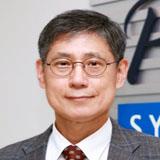
Dr. Sang-il Park
CEO, Park Systems
After studying physics at Seoul National University, I moved to Stanford University in 1982 for its PhD program. That was the year when the first scanning tunneling microscopy (STM) result was released. I was fascinated that STM could image individual atoms. Fortunately, I was able to join Professor Calvin Quate at Stanford who was starting the STM project. My stroke of luck was that atomic force microscopy (AFM), which brought far greater impact than STM, was subsequently invented during my presence in our lab when Gerd Binnig and Christoph Gerber joined Quate’s group on their sabbatical. Two years ago, the 2016 Kavli Prize in Nanoscience was awarded to Binnig, Gerber, and Quote “for the invention and realization of atomic force microscopy, a breakthrough in measurement technology and nano sculpting that continues to have a transformative impact on nanoscience and technology.”
While working in Quate’s group, I saw first-hand the exciting potential of AFM technology not only for academic research but also for a wide commercial use for nanoscale research and development across all disciplines and industries. In 1988, I took the brave step of starting a company called Park Scientific Instruments with the lofty goal of commercializing the first AFM. It was a huge challenge for a foreigner to start a venture without any business experience or capital. However, by being the first to commercialize this technology and by receiving support from the Silicon Valley startup ecosystem, we did well, breaking even after one year and making money in its second year. Nine years later, I sold the company to Thermo Spectra for $17 million and moved back to Korea to start the next generation AFM Company encompassing pioneering innovations: Park Systems.
Our innovation included decoupling of XY and Z scanner, flexure based nanoscale motion control, and highly responsive Z servo system. This advanced architecture rendered practical non-contact mode AFM at all times in any ambiance. We call this True Non-Contact™ mode that can preserve tip sharpness, reduce sample modification, and increase accuracy. We also developed various new methods, including Park PinPoint™ mode. In PinPoint™ mode, the probe approaches to the sample surface vertically and makes controlled contact at each point to collect mechanical and electrical properties, such as stiffness, adhesion, conductance, and resistance, as well as topography in nanometer resolution. This technology has proven extremely useful in both research and automated industrial production lines.
In recent years, we have innovated Park SmartScan™ operating software that automates the operation of AFM imaging similar to point-and-click of today’s user-friendly digital cameras. What was once complex to use an AFM is now very simple to operate with very little training, and this will broaden the AFM market significantly.
As we demonstrated superior performance, we gained market share and our revenue grew continuously. In 2015, we went public in KOSDAQ (Korea stock market). Since IPO, the market capitalization of Park System has increased over four times, reaching $250 million.
The widespread adoption of the AFM has led to some of the most important developments in research and engineering at the nanoscale and has made a significant contribution to both science and industry. The AFM is now one of the foremost tools for imaging, measuring, and manipulating matters at the nanoscale. It has aided in many scientific and engineering advances over the last three decades including innovations in nanomaterials, nanodevices, nanobio, electrochemistry, and much more. Furthermore, for semiconductor manufacturing, the AFM has become the natural successor to tools such as stylus profilers, optical microscopes, and CD-SEMs as it allows for easy, non-destructive, accurate characterization at the nanoscale level. As partners with both academia and manufacturing, Park Systems strives to address new imaging, surface characterization, and metrology needs by developing more advanced AFM technologies for a very exciting future in nanoscale research, development and manufacturing.
Feedback
We welcome your feedback and invite you to submit topics for consideration in future issues of this newsletter. If you have or know of stories that illustrate how an investment in materials research paid off in real dollar terms, please send your suggestions to INTERSECTIONS Editor, Len Brillson, at [email protected]. Please send your comments to [email protected].
Sign up for MRS newsletters and alerts by visiting My MRS. There you can login or create an account, and select INTERSECTIONS under Public Policy to receive this quarterly newsletter via email.
Not a current MRS member? It’s never too late to join or renew.